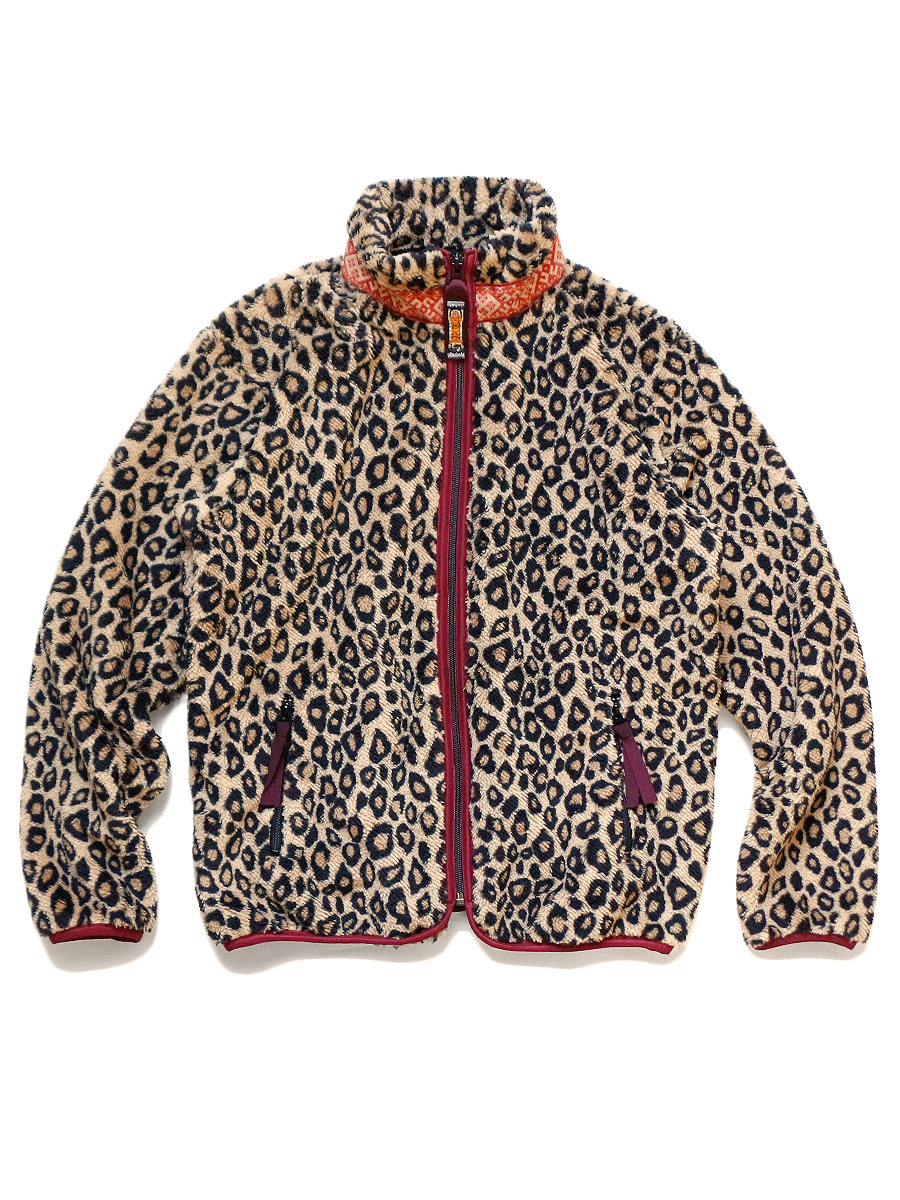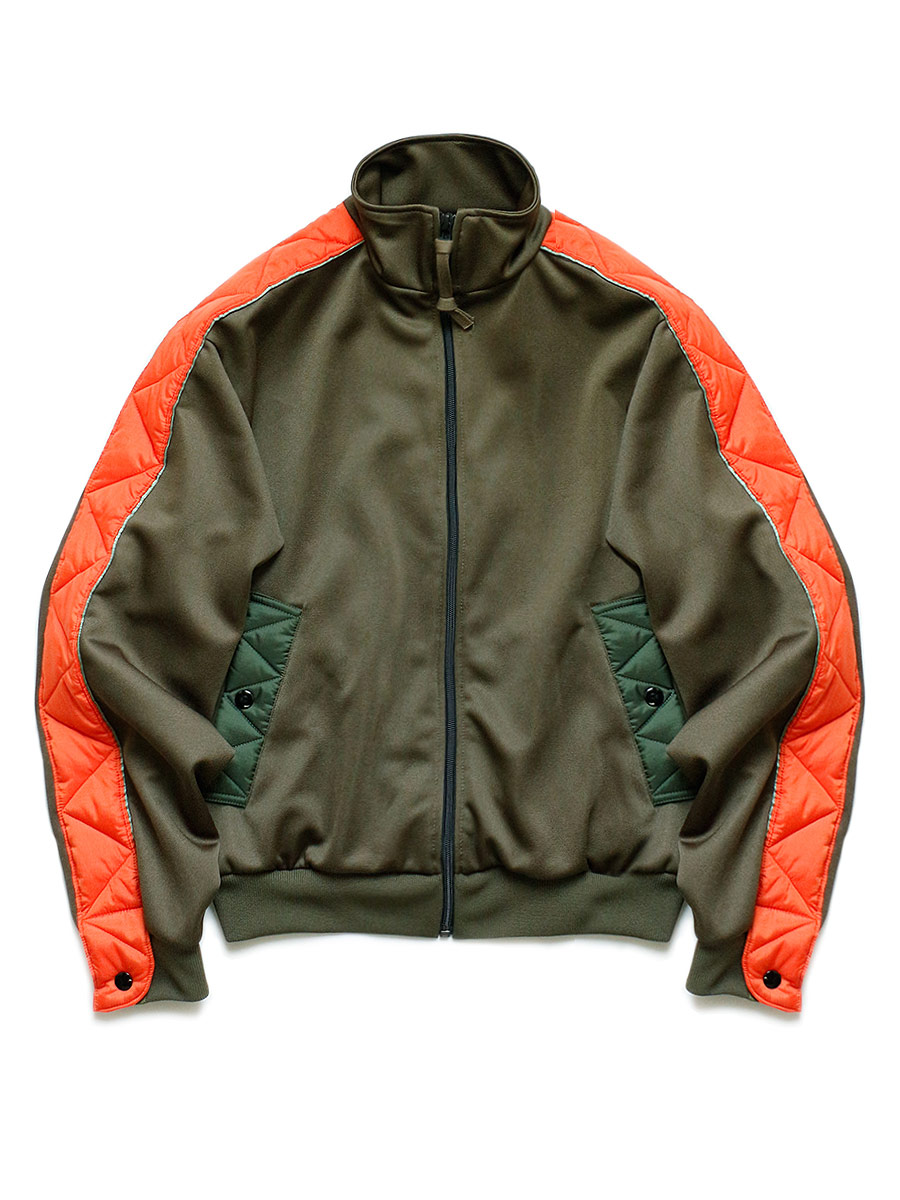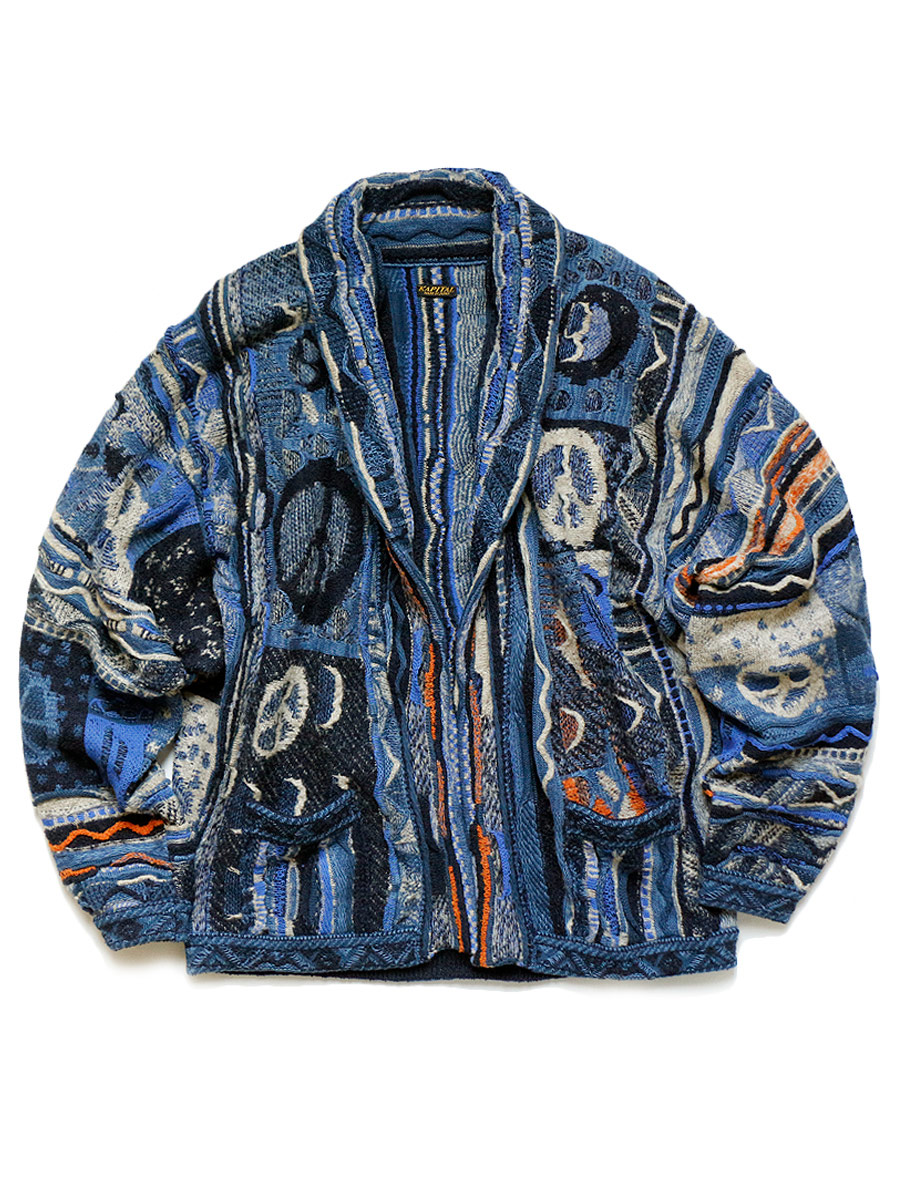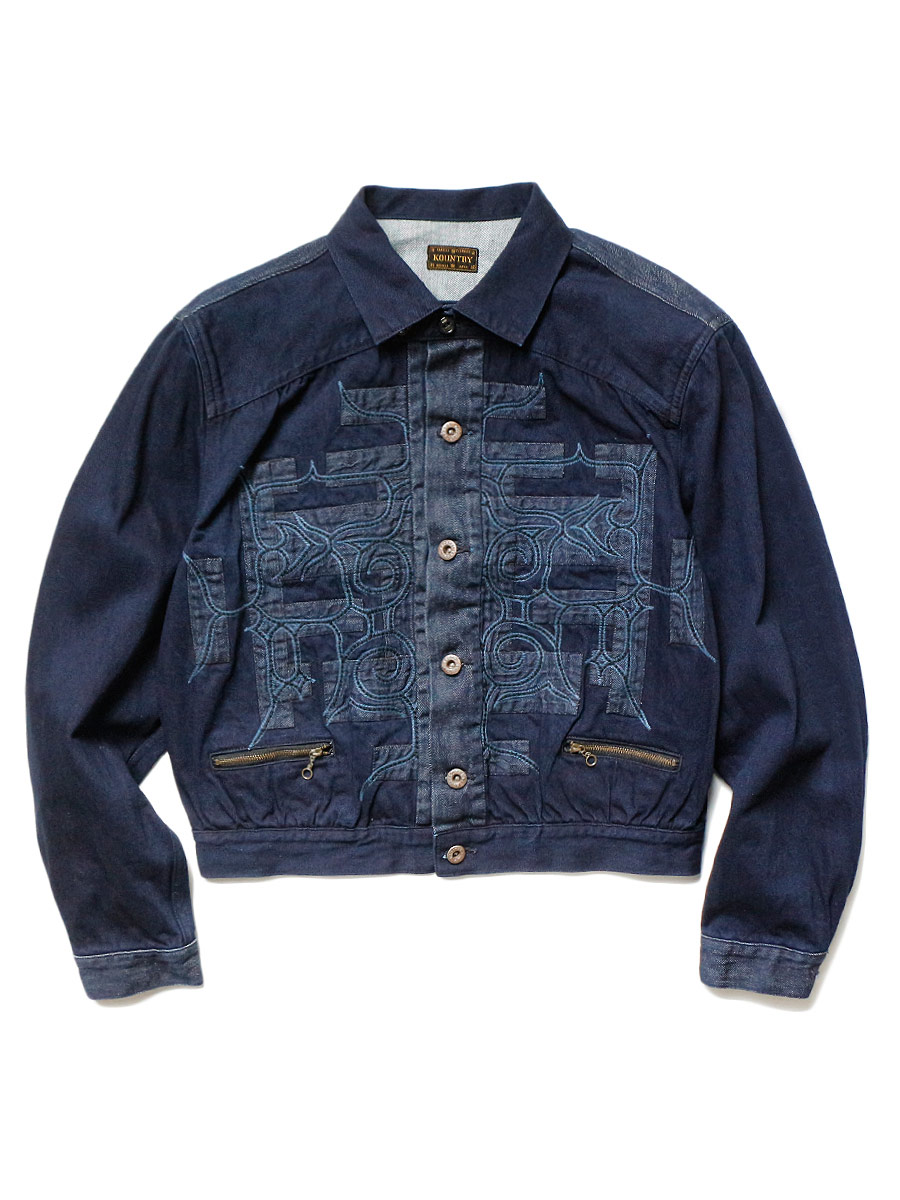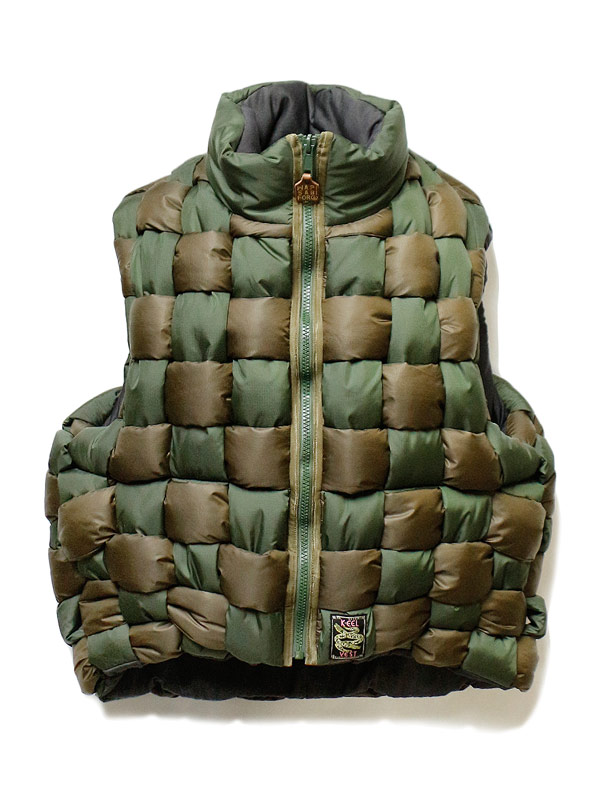Season after season, Japanese brand Kapital manages to excite, confound, inspire and captive with its range of clothing. Designs blend familiar and innovative ideas, and utilize top-tier construction and materials. The brand isn’t afraid to take risks and embrace esoteric or quirky concepts. Though operating in this creative space could be a risky business move for many brands, Kapital arrived here after decades of transformation.
Founded in 1984 by Toshikiyo Hirata, Kapital is an independent, family-owned clothing brand based in Okayama, Japan. Its factory initially produced jeans for notable brands like Studio D’Artisan, Denime and 45rpm, helping to establish Japan as the preeminent producer of denim. In 1995, Kapital opened its first store in Kojima and a year later it released its own of jeans called TK. Hirata’s son Kazuhiro (Kiro) joined the brand in 2001 after working as a designer for 45rpm and brought a new vision to the company.
Instead of just producing well-made historically-informed garments, Kiro created a range of new clothing inspired by sub-cultures, vintage apparel and ethnic traditions spanning the globe. Kapital embraces the individual craftsman behind each piece, and at the brand’s Kountry wash-house which was founded in 2010 outside Kojima, clothing is pre-distressed, dyed and mended.
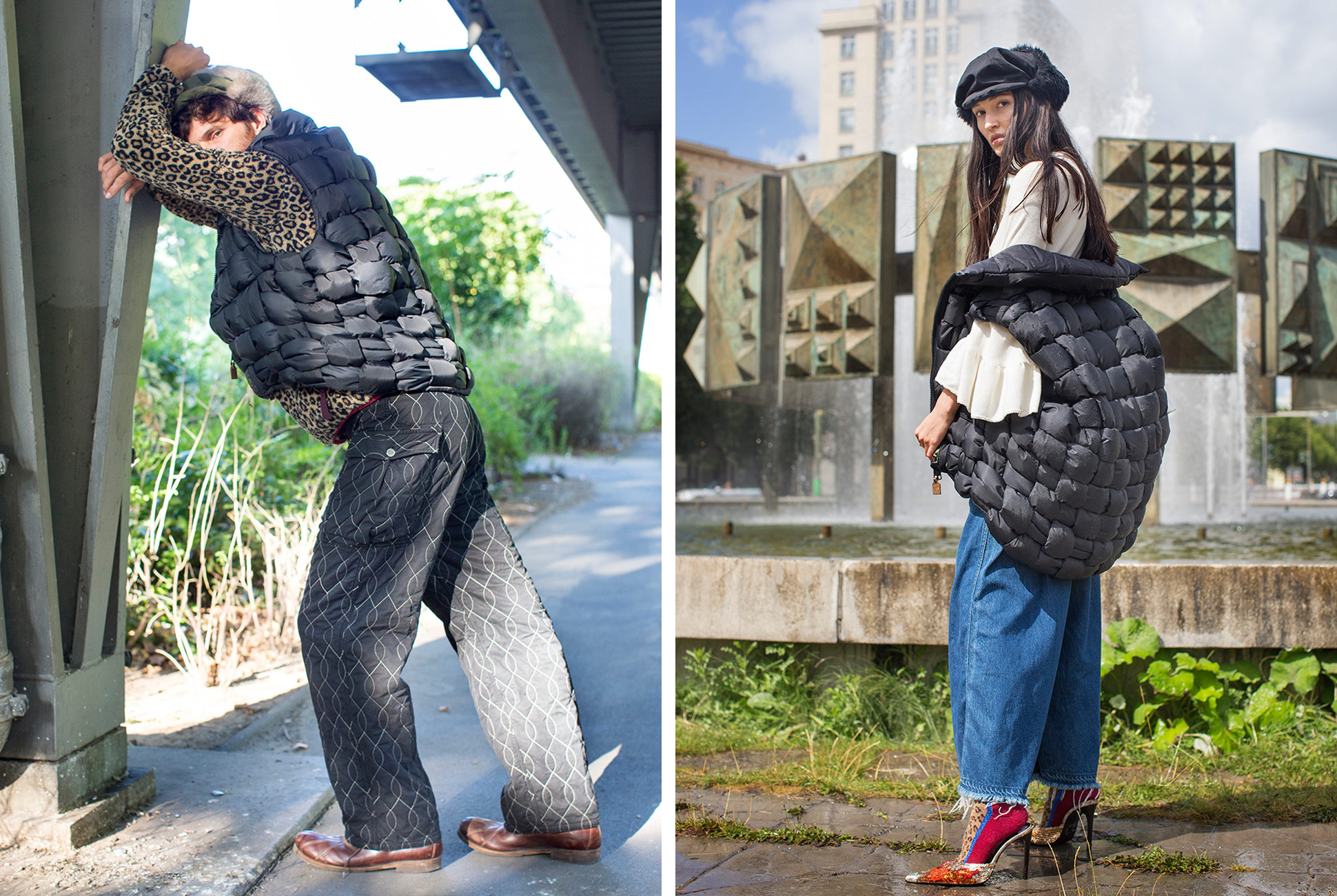
Photo by Eric Kvatek.
With such experimental and unique clothing, the brand needed an alternative to bland industry-standard lookbooks. So they teamed up with Brookyln-based photographer Eric Kvatek to produce in-depth photo books, cataloging each season’s garments on unconventional models in peculiar locales. Over the past 15 years, Kvatek has shot Kapital books in locations like Mongolia, Lappland and Thailand. The titles are as diverse as the content: Azure Anarchy, Hooligan Ivy, Surf Cowboys, Peace Pilgrim, Bad Opera.
The latest book — called Denim Bauhaus — showcases Kiro’s FW2018 designs in Berlin, Germany. The urban setting is a departure from many Kapital books, and models are posed around Soviet-era buildings, historic landmarks and former US military installations. Formidable architecture — angular, imposing, bleak — is a canvas for intricate garments: an Ainu-pattern denim jacket, a Coogi-meets-boro cardigan, a puffy, woven ripstop vest.
To learn more about how the book came together, we caught up with Kvatek on one of his down days in NYC. Though Berlin certainly isn’t the most far-flung location he’s worked in, it provided a distinct setting to further showcase Kapital’s designs.
Q: What number book is this that you’ve shot for Kapital?
A: I just realized this is the 40th book I’ve shot for Kapital. So I guess it makes sense that we had a kind of “best of” crew of models.
Q: While urban locations aren’t frequent in Kapital’s books, you have shot in Paris, London and NYC for the brand. What made Berlin different and how did the architecture and environment inform the photography?
A: Kiro and I were both kinda inspired and excited about the new and old Blade Runner movies so we wanted a “past’s vision of the future” kinda setting. Berlin has these odd structures built during the Cold War that aren’t really famous so it’s not like, “Oh that’s the Eiffel Tower or London Bridge.”
Q: What was your camera setup for this book?
A: After 30 years of shooting, 20 years as a professional, I shoot 95 percent of my job photos with a Canon 1DX and a 50mm lens — no lights, no flash, no reflectors, no assistants. If one of the models pitches in and carries my bag, that’s a luxury.
Q: What initially stood out to you when scouting locations?
A: Berlin was actually kind of tough. I really dislike graffiti and Berlin is thoroughly and utterly covered in it. Not even “good” graffiti — it’s like a paint truck exploded, but not even as cool as that would be. I can’t even think of a diplomatic way to say it. It’s just inundated with horribly uninspired tags and scribbles. It’s unfortunate because it’s really such a beautiful, unique place. Eventually, I just had to get over it.
Q: Is the more modern setting a reflection of Kiro’s designs this season, a conscious juxtaposition or just change for the sake of change?
A: There is a technical and innovative aspect to the clothing, so I think it made sense to consider a somewhat modern location. When I was shooting it, I never felt like this doesn’t make sense. The location and clothing really matched at the end of the day.
One thing I really strive for is to never change for the sake of change. Kiro’s turned out maybe 45 collections? I’ve shot 40 of those. It would be easy to copy ourselves and randomly flip things around occasionally for the hell of it. But Kiro’s really an amazingly thoughtful designer. He’s researching history. He’s imagining the future. He’s reinventing the wheel. But he’s also not in a bubble. He is aware of what’s going on elsewhere in the fashion world. Of course, some collections are more successful than others. Some of the shoots are more successful than others. If all we did is copy ourselves, maybe the photos would actually be better. But because we do take some chances, there’s the possibility of greatness and the risk of just sucking.
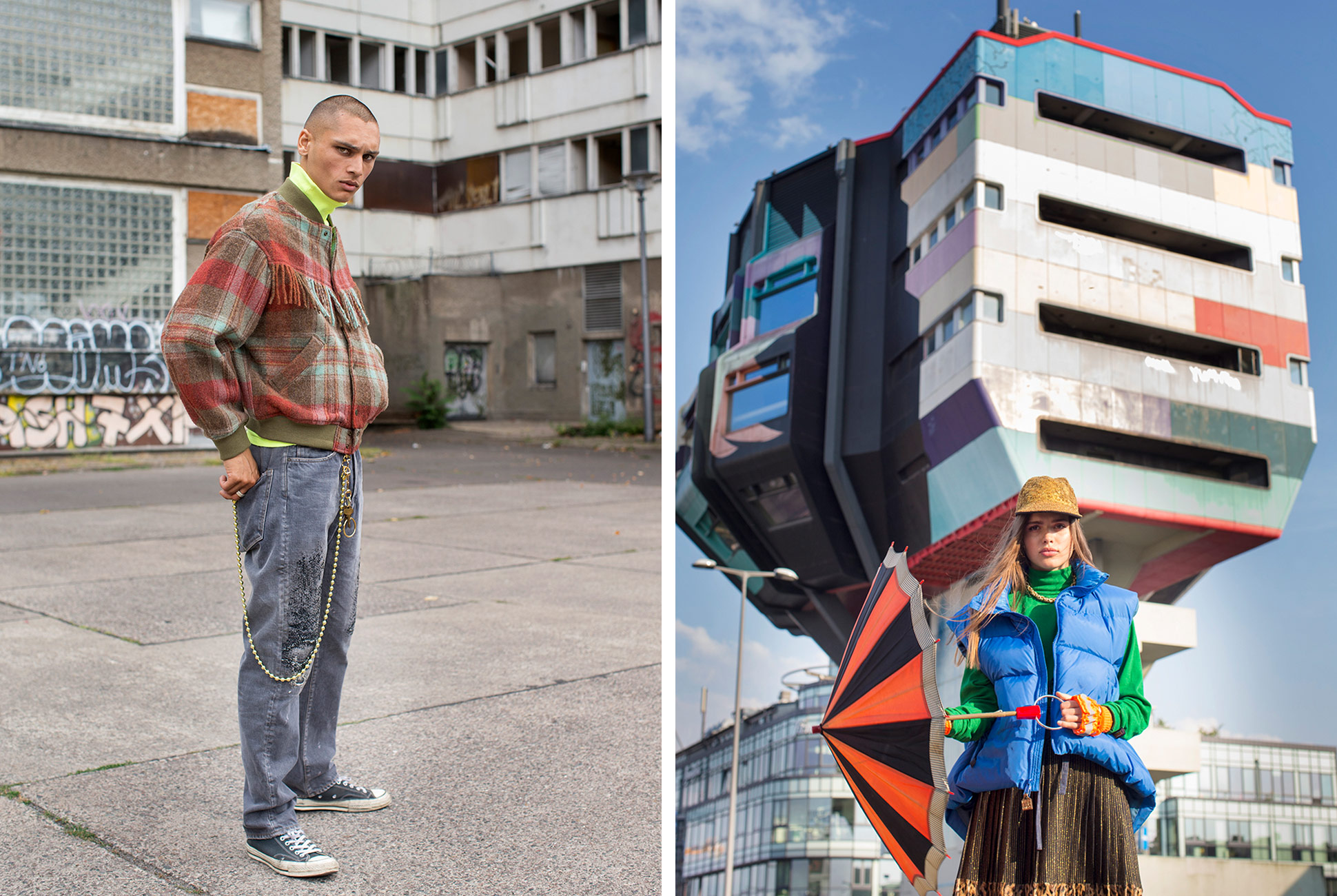
Photos by Eric Kvatek.
Q: Any favorite moments from your time in Berlin? Any favorite shots from the book?
A: Really just by chance, we had this sort of Reunion Tour — a bunch of models joined us from over the years. Most notably Anousha, who I discovered in Africa ten years ago. We had not shot with her since 2013. Also, Timea from Budapest and my guys from Paris. It’s strange because these are some of my best friends and I only see them once or twice a year if I’m lucky.
I think I once read that the difference between Japanese and American photographers is that for Japanese photographers, the body of work is the emphasis, whereas American photographers are more concerned with the individual shot. If that’s true, then I have to say for this shooting, it’s more in the vein of a Japanese perspective — it’s really more about the entirety. There are some shots that I prefer, but to single them out doesn’t really benefit the whole.
Q: After shooting so many books for the brand, how do you continue to stay creative?
A: That’s a tough one. Because most of us innately prefer our comfort zone which entails that we resist change, resist growth. Perhaps my childhood uniquely prepared me to avoid that. My family was forced to move often and unexpectedly, so as a youth, I adjusted to upheaval. I lost best friends and comfort zones at the drop of a hat. Eventually, this becomes normal, and then its no longer a negative state of being. Another way to look at it, and maybe it’s an oversimplification, but a lot of guys I know cling to the 10 favorite songs they loved in high school or college. Yeah, I still like those songs, but I’d rather listen to music I’ve never heard before, than my 10 favorite songs. I love discovering some new gem. So maybe that carries over into photography. I have my bag of tricks to be certain, but I kinda love being freaked out and in a near panic and then bringing it back from the brink of failure.

